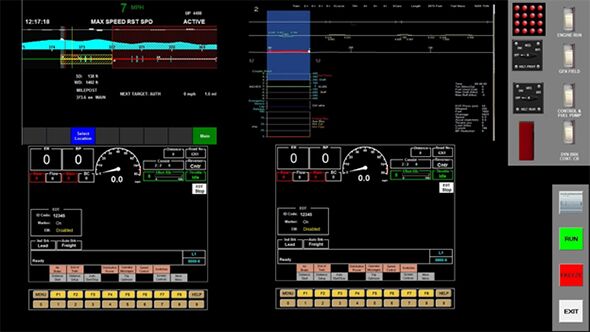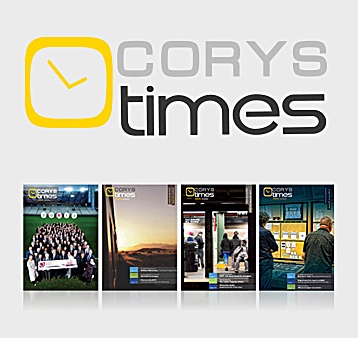Since the Rail Safety Improvement Act of 2008 was signed into law on October 16, 2008, Class I and commuter railroads have scrambled to integrate the infrastructural and organizational changes required to fully realize Positive Train Control (PTC) by December 15, 2015.
In addition to financing entirely new data networks and retrofitting on-board display screens, railroads were also faced with the task of training their workforce to use this new lifesaving software safely and efficiently. For railroads where track availability is slim and operations costs are high, simulator time is an effective solution.
Through a close working relationship with PTC vendor, Wabtec, Corys delivered early software versions of ETMS to BNSF in 2008. Amtrak, another early PTC user, integrated ACSES into its simulators in Wilmington, Delaware in 2000. With the goal of having all of their engineers PTC-certified by the time the system was live, trainers were able to stop, resume, and insert faults into the PTC software.
PTC training with a simulator
As more railroads began turning to simulators to begin PTC familiarization, they began to consider the federal requirements for PTC training with a simulator. The rules for initial certification and recertification are very clearly defined in CFR 240, “…at the controls of a Type I or Type II simulator programmed to replicate the responsive behavior of the type of train normally operated on that railroad or segment of railroad and which this person might be permitted or required by the railroad to operate in the normal course of events after certification.” (Criteria for Examining Skill Performance, § 240.127).
However, the rules for determining PTC readiness (§ 236.1047) less clearly define the type of simulator realism required. This notable absence gives railroads flexibility in how they choose to execute training and certification. Regardless of how they choose to do so, their training program must be approved by the FRA.
Thus, it has been left up to railroads to design a comprehensive training plan for PTC and submit it to the FRA for approval. These training plans can include classroom, on-the-job, computer-based, as well as simulator training.
A strong advantage of utilizing a simulated PTC model as a component of a PTC training course is that it allows for the simulation of situations depicting PTC equipment in a degraded state. This type of training is clearly a part of the § 236.1047 training requirement. Communication faults, field equipment faults, and conflicts of PTC indications with published track bulletins can be experienced and sensitize the student to their need to keep their head in the game and provide that measure of additional fail-safe operation.
PTC initialization and familiarization training
Because PTC training is rolled in with more general engineer training, programs already using simulators can use those systems for PTC training. Other training programs may turn to smaller computer simulators (such as a tabletop) for PTC initialization and familiarization training, and then complete their certification on larger simulators. Other avenues to utilize technology for PTC training could deal with refresher classes for staff who have already received initial training for operations in non-PTC territory and then return to PTC operation. It could be envisioned that tablet based training courses could re-familiarize staff with the detailed procedural steps of initialization and other interactive PTC tasks through training on demand.
Finally when simulation is used for PTC, like any other type of simulator based technical training, it can provide records of the type of training experienced and the performance of the students while engaged in the training. This can focus additional training experiences when performance results indicate the need and provide management with confidence in the readiness levels of the staff. This is enhanced with the use of LMS systems.
Aware of future changes up-stream of the specification
A challenge facing simulator operators is the evolving nature of the PTC specification. This leads to version updates in the cab PTC equipment. The FRA mandates that simulations of PTC must reflect current revision levels of field equipment. On-Board version updates are defined by the release of specifications which define these changes. Because these specifications are currently released simultaneously with the field update of the equipment there can be a significant lag between the update of equipment and the availability of a fully valid simulator capability. Corys has been working with the PTC vendors to become aware of future changes up-stream of the specification release. While this offers some developmental risk, there is the benefit of timely availability of valid simulations deployed in lock step with the field changes.
As complex human machine interfaces become more prevalent on American rolling stock, it is clear that robust training programs are required in order to maintain a confident, efficient workforce.



